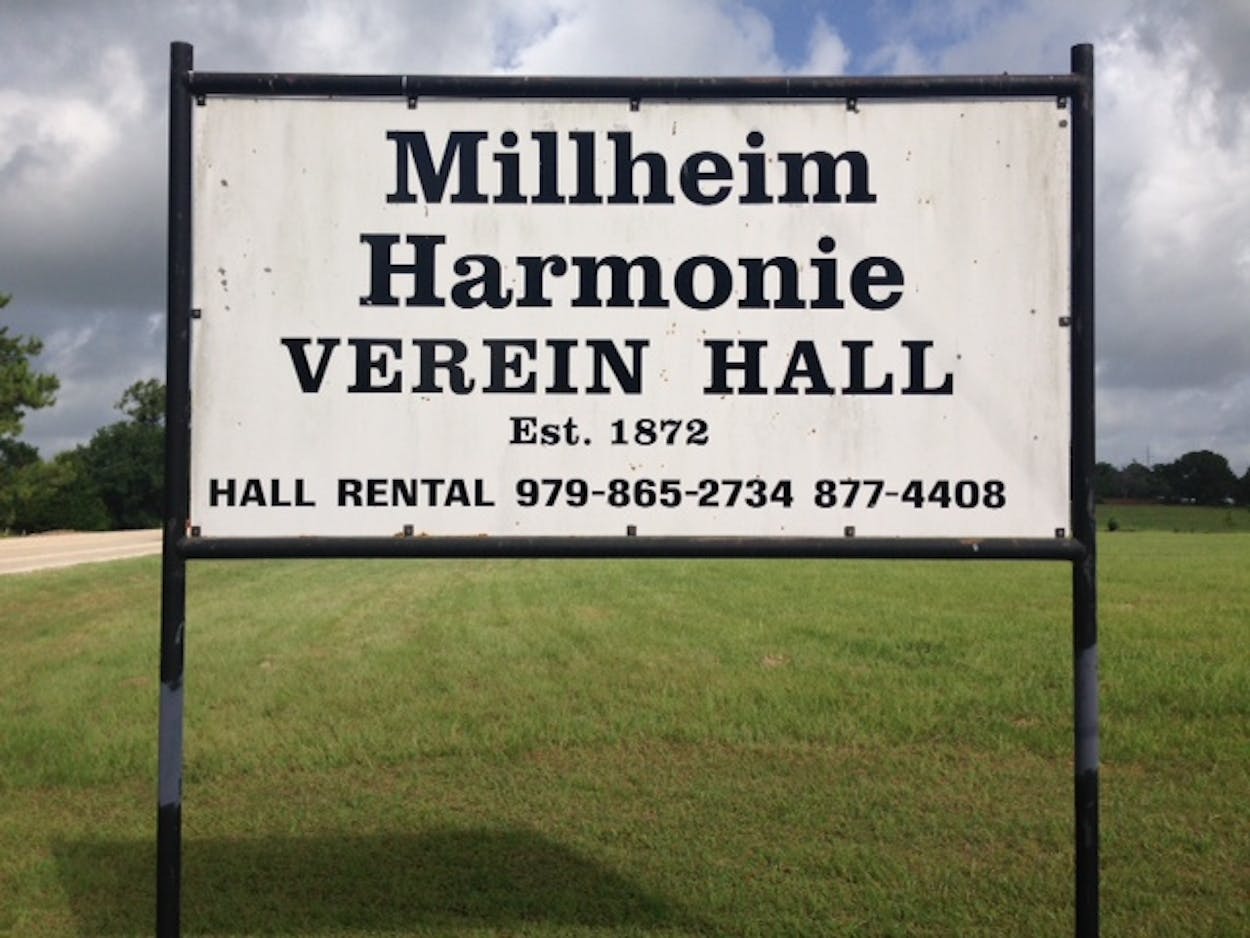Austin County has served as the cradle for German Texans since 1831 when Friedrich Ernst founded the town of Industry. It was the first permanent German settlement in Texas, and Ernst became a huge promoter of Texas through his letters back to his home country. His home also became a way station for future German emigrants earning him the nickname “the father of the immigrants.”
Additional German settlements sprang up in the surrounding area that would become Austin County – Cat Spring in 1843, Millheim in 1845, and Kenney and Peters in 1880. Each of these towns created community groups, or vereins, which became social centers. Maifest, Oktoberfest, and other holidays were celebrated within and around the halls built for each verein. Community barbecues were also an important part of these celebrations, and many of these halls still have barbecue pits on the grounds. At the dance hall in Cat Spring they’ve been lighting the pits since 1856 (the oldest community barbecue in the state), and you can get a plate on the first Saturday in June. In Peters, the barbecue is served on Mother’s Day, and it’s the Fourth of July for the Kenney barbecue. In Millheim, they fire theirs up every year for a Father’s Day barbecue.
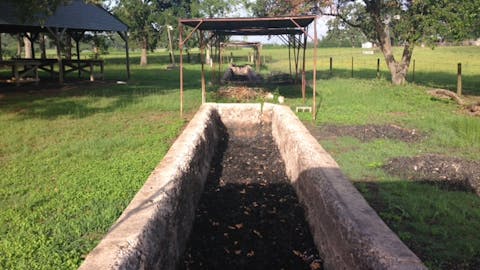

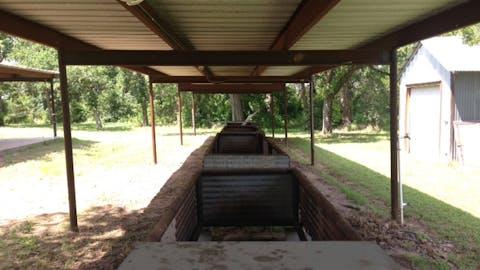
Texas barbecue historian and author Robb Walsh has tried to get me to Millheim for a few years now. He was the first journalist of this era to celebrate these small town barbecues, first on his blog Zen BBQ, then in his book Barbecue Crossroads. We met on the grounds of the Millheim Harmonie Verein Hall the morning of Father’s Day. A group of about ten men took turns stirring beans and gravy (don’t call it sauce) with large wooden paddles in large cast iron pots. James Grawunder supervised the group from a stool, and cussed anyone who dared set in it when he was up stirring. Butter and chopped onions had been stewing together for some time before several large cans of Hunt’s ketchup were poured into each vat. A while later after I’d eaten several spoonfuls, I tried an ingredient guessing game with Grawunder. Butter, onions, and ketchup were a given, but what about vinegar? “There’s no vinegar, and no brown sugar” was all he offered. How much has the recipe changed over the years? “Not one bit. This is the formula that has always been.”
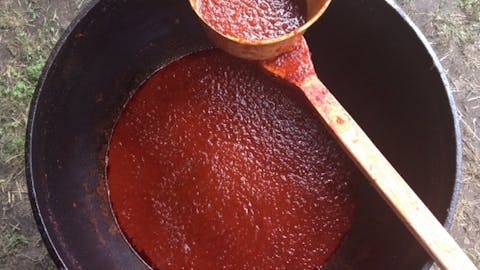
Another ten cooks were tending to the meat cooking over coals in two long open pits surrounded by low concrete walls. Men mopped a slurry of vinegar, salt, and onions onto beef shoulder clods, pork shoulders, and portions of mutton as they sizzled on steel grates. The method is centuries old, and has more in common with Carolina whole hog than it does with the smoked meat of Central Texas meat markets. “This here, you won’t taste no smoke because this is open pit,” explains former cook Allan “Cap” Hillboldt, who at eighty-six is the elder of the group. “Them smoky pits, you taste that barbecue the next day.”
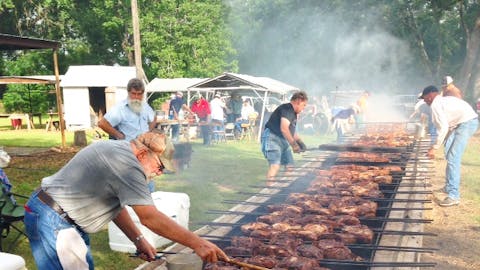
Those smoky pits were also an innovation that came along with the barbecue joint toward the end of the nineteenth century. Before then, barbecues in Texas were public affairs where meat was cooked over a trench in the ground, similar to these present-day Austin County barbecues. Slaves were usually tasked with manning the pits for these public barbecues, and at the time the barbecues began in Cat Spring, slaves made up a third of the population in the area that would become Austin County. It’s not a stretch to suggest that the German Texans borrowed these cooking methods from slaves who had brought their traditions from the Deep South to Texas.
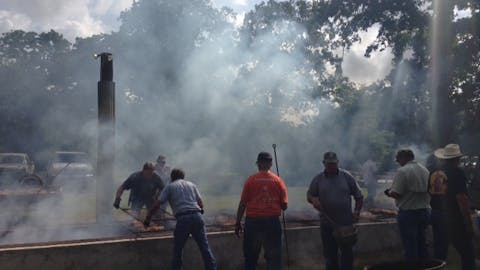
Herbert Schumann has been on the cooking crew for the past fifty-five years. He walked the length of each pit with a long steel poker in hand, and used it to stir up coals wherever a little extra heat was required. To get this hearty bed of coals oak logs had been stacked up and lit the night before. Schumann explained, “you gotta stack it real tight…so it doesn’t have a whole lotta holes in it, otherwise you won’t have good coals. It’ll all burn up.” After three hours of the wood burning, the meat is ready to go on right around 11:00pm while the night crew tends the pits. Schumann was part of the day crew that had taken over around 6:00am.

The work here at the barbecue is organized strictly by crew. The meat cooks don’t touch the gravy, and vice versa. Then once the meat is done, the meat cutting crew trade their Miller Lites for knives while the cooks take a rest.


One of those cutters is Cap Hillboldt. “I used to cook, but I got a touch of emphysema and old age.” Cap learned the ways of barbecue from his father who also cooked at Millheim. Back then there wasn’t any pork, and the beef was quartered calf carcasses. Cap wasn’t certain when the switch was made to smaller cuts, but a program from the Millheim Verein centennial celebration in 1972 still advertised ”Veal and Mutton Barbecue with all the trimmings.” They didn’t cook pork, and they didn’t use coolers either. Nowadays the meat goes from the fire and into a large igloo cooler to finish cooking. Cook Shayne Carter explains “It’s steaming itself in there, so the meat gets very tender, and very moist.”

The meat was certainly tender, and plenty moist right off the cutting block. A few hangers-on hovered around the cutting tables like hungry puppies hoping for generous scraps. We got plenty. I also bought a plate and went through the buffet line. It’s amazing how quickly meat can degrade after slicing, and just fifteen minutes later is was well beyond its peak. I still piled it on, and polished it off. Anything submerged in a bowl of that gravy is quickly revived.
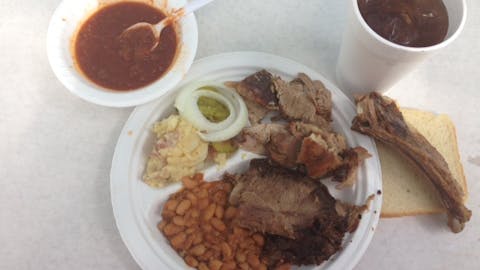
It might not be the finest barbecue I’ve eaten, but that hardly matters when you get to witness barbecue being cooked with century-old techniques. Especially when it’s uncertain how much longer these community barbecues will last. “The problem is we’re all getting old, and there aren’t too many young folks who want to do this stuff” lamented Herbert Schumann. So, if you like barbecue, history, and Miller Lite, get over to Austin County and volunteer to help with one of these community barbecues. At the very least, you’ll get first dibs on the fresh sliced meat right off the cutting board.
For further reading on the historic dancehalls of the area refer to Stephen Dean’s Historic Dance Halls of East Central Texas, and for more about community barbecues in Texas check out Barbecue Crossroads by Robb Walsh.


